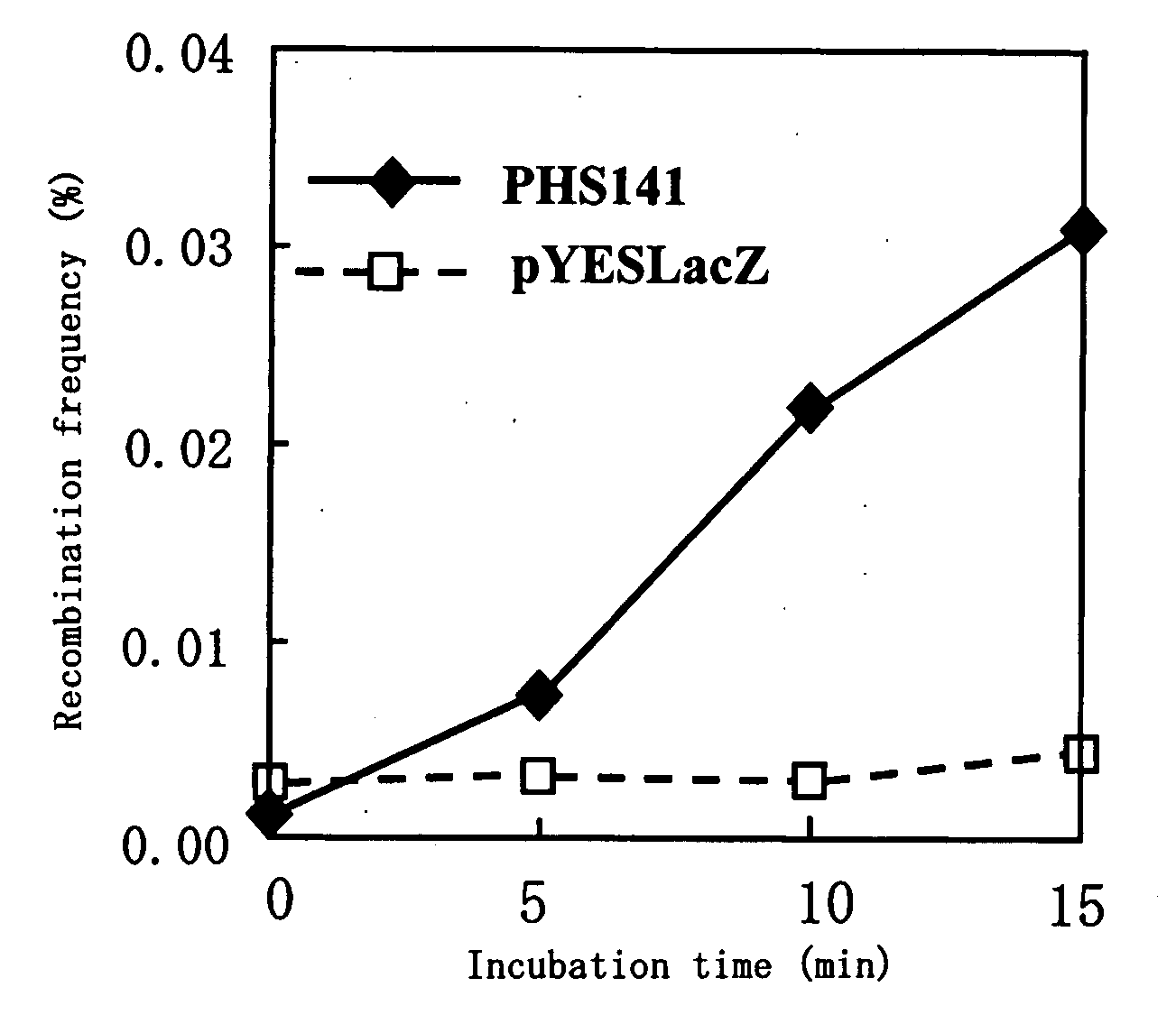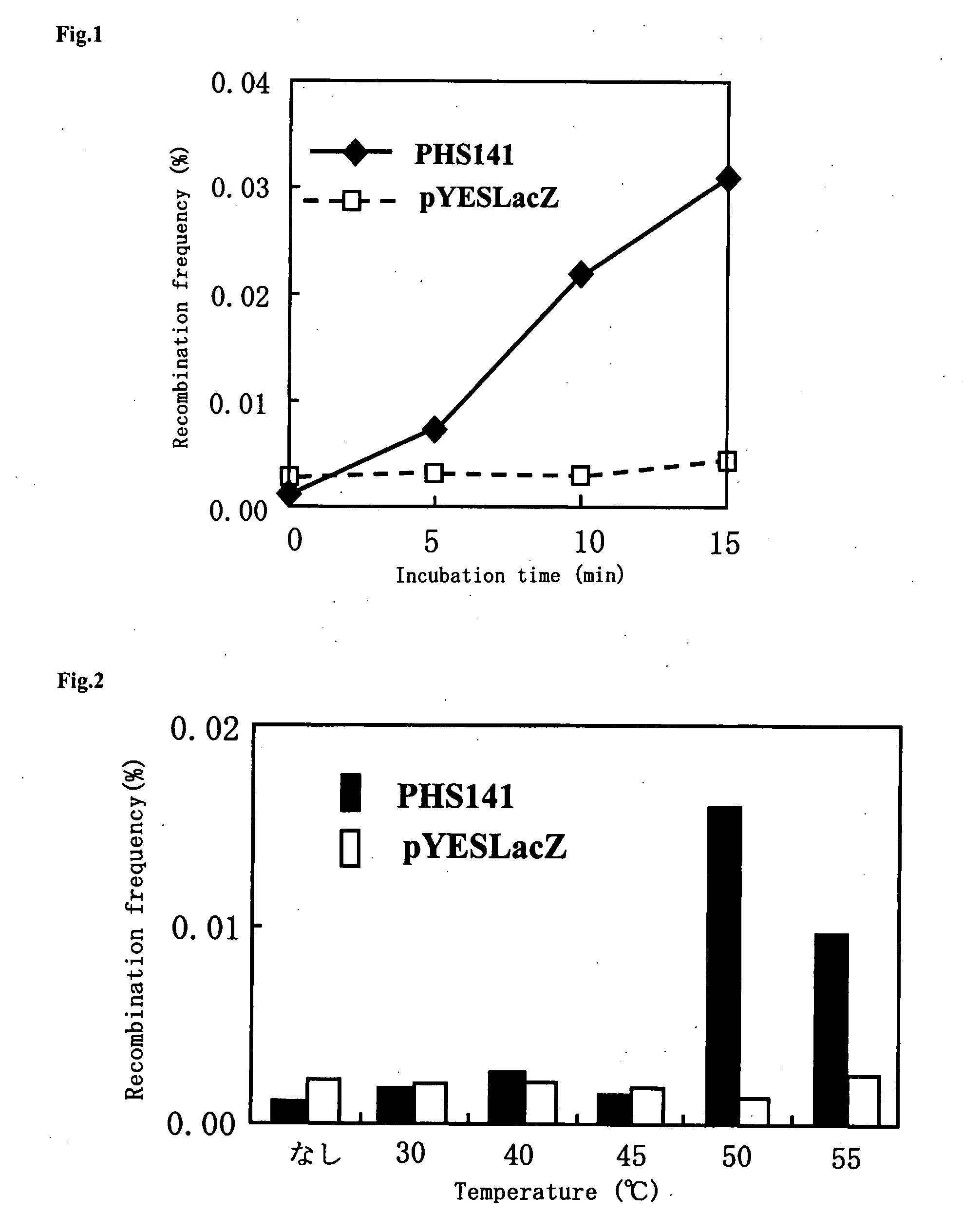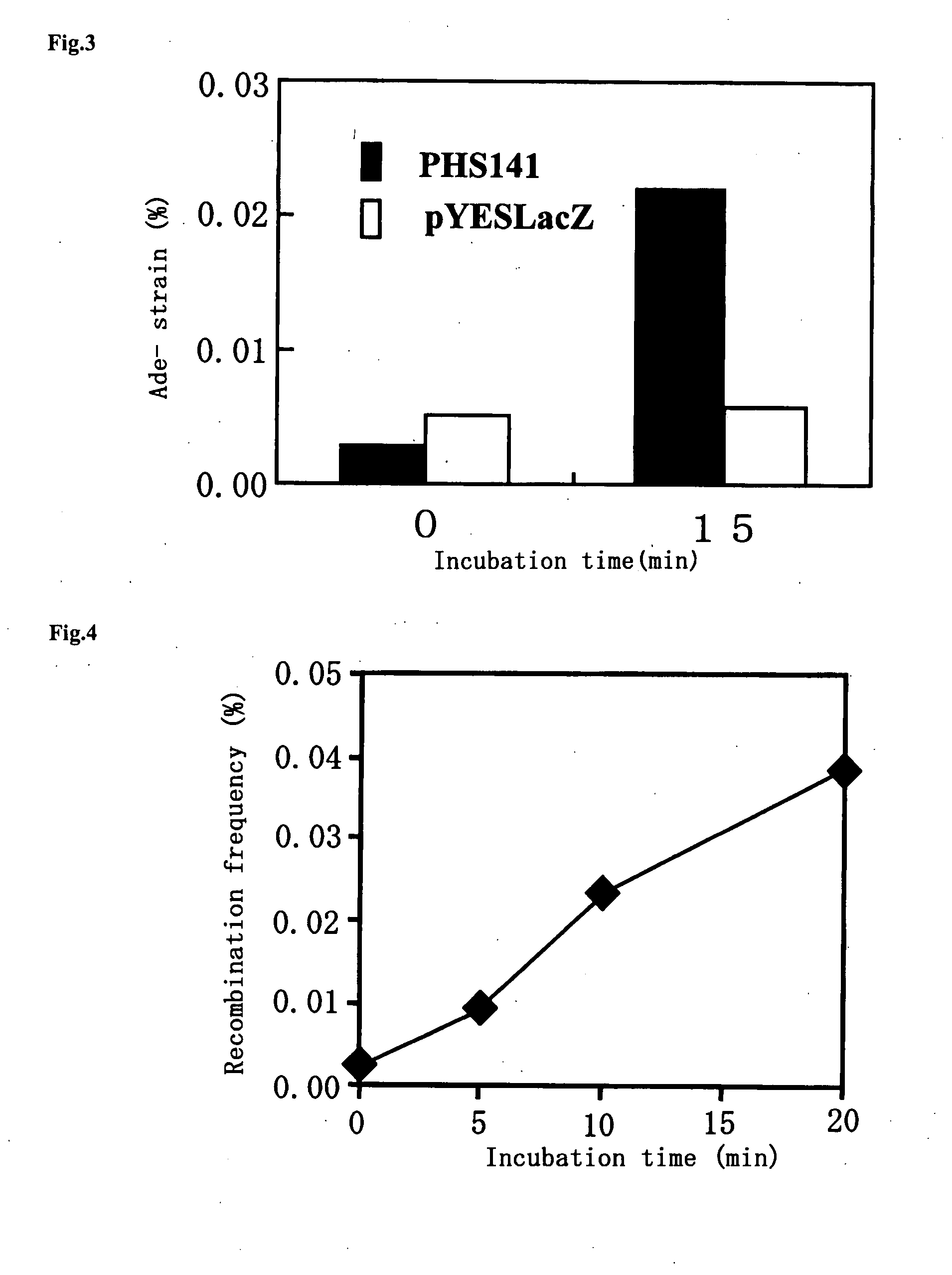Method of Inducing Genome Reorganization Via Intracellular Activation of Thermostable Multifrequency Dna-Cleaving Enzyme
a genome and multi-frequency technology, applied in the field of genome rearrangement induction, can solve the problems of inability to control enzyme activity, no useful system established, lethal effect on cells, etc., and achieve the effect of improving the frequency of genetic recombination, promoting genome shuffling, and relatively easy improvement of genetic traits
- Summary
- Abstract
- Description
- Claims
- Application Information
AI Technical Summary
Benefits of technology
Problems solved by technology
Method used
Image
Examples
example 1
Activation of Recombination in Budding Yeast
(1) Preparation of Plasmid for Taq I Expression
[0031]Cloning of Taq I endonuclease was performed as follows. Amplification was performed with a 50-μl scale using Taq I-Nterm2 (GGAAACATGGCCCCTACACAAGCCC) (SEQ ID NO: 1) and −Taq I-Cterm (CGGGCCGGTGAGGGCTTCCC) (SEQ ID NO: 2) as primers and a Thermus Thermophilus HB8 Genomic DNA Solution (TAKARA SHUZO CO., LTD.) as a template, and Pyrobest DNA polymerase (TAKARA SHUZO CO., LTD.). After heating at 98° C. for 2 minutes, 23 cycles of a reaction cycle consisting of 98° C. for 20 seconds, 63° C. for 30 seconds, and 72° C. for 1 minute were performed. Finally, a reaction was performed at 72° C. for 5 minutes. Subsequently, 0.5 μl of EX Taq (TAKARA SHUZO CO., LTD.) was added, followed by a reaction at 72° C. for 10 minutes. 10 μl of the thus obtained sample was separated by 1% agarose gel electrophoresis, a band corresponding to the Taq I gene was excised, and then the resultant was purified using a ...
example 2
Activation of Recombination Within Fission Yeast
(1) Preparation of D50 Strain
[0057]A Taq I gene fragment was obtained by a PCR reaction using the genome of a heat-resistant bacterium as a template and the following oligo DNA.
cccCATATGGCCCCTACACAAGCCC(SEQ ID NO: 3)(Underlined portion indicates an Nde Irestriction enzyme recognition site)cccGGATCCTCACGGGCCGGTGAGGGC(SEQ ID NO: 4)(Underlined portion indicates a BamH Irestriction enzyme recognition site)
[0058]The sequence of thus obtained fragment was confirmed and then cleaved with Nde I-BamH I. The fragment is referred to as Taq I-FR. A fission yeast transcription promoter nmt1, TaqIFR, transcription terminator, KanR (geneticin resistance marker gene), fission yeast leu1 gene 3′ fragment, and pUC118 were linked and circularized in this order, thereby obtaining an intL-Taq I plasmid. intL-Taq I was cleaved at the Xho I site within the leu1 gene. The resultant was transformed into a fission yeast strain D26. Transformation and obtainment...
PUM
| Property | Measurement | Unit |
|---|---|---|
| Temperature | aaaaa | aaaaa |
| Temperature | aaaaa | aaaaa |
| Temperature | aaaaa | aaaaa |
Abstract
Description
Claims
Application Information
 Login to View More
Login to View More - R&D
- Intellectual Property
- Life Sciences
- Materials
- Tech Scout
- Unparalleled Data Quality
- Higher Quality Content
- 60% Fewer Hallucinations
Browse by: Latest US Patents, China's latest patents, Technical Efficacy Thesaurus, Application Domain, Technology Topic, Popular Technical Reports.
© 2025 PatSnap. All rights reserved.Legal|Privacy policy|Modern Slavery Act Transparency Statement|Sitemap|About US| Contact US: help@patsnap.com



